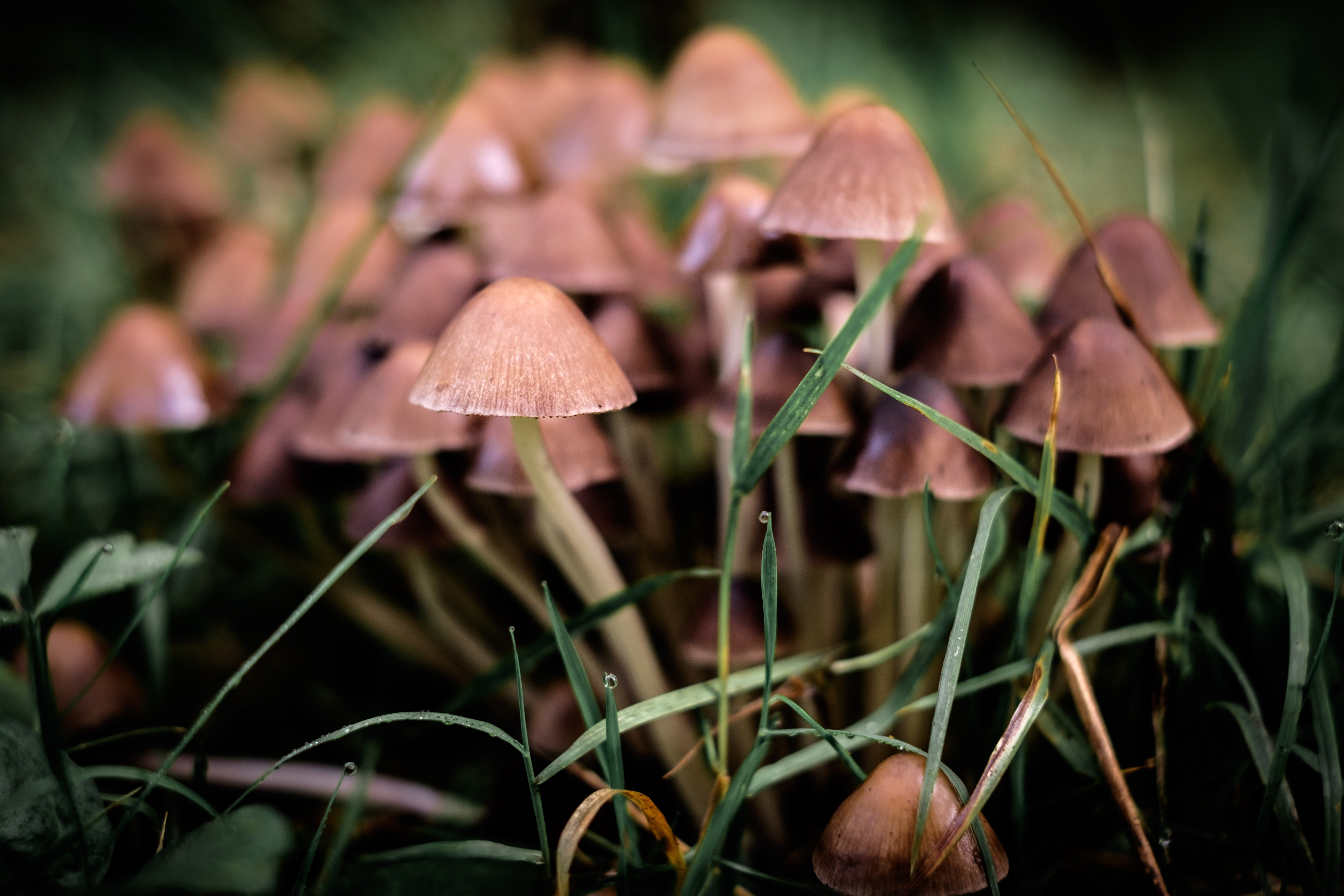
If you read our introduction to mushrooms, you’ve learned a little bit about what an adaptogenic mushroom is and which mushrooms you’ll find in Wunderground Coffee—namely, Chaga, Reishi, Cordyceps, and Lion’s Mane. But if you want to know what really sets our mushroom coffee apart, we’ll have to go deeper—literally. Let’s take a look at how a mushroom grows.
Fruiting body vs. Mycelium
As we shared in a previous article, there are two main parts to a mushroom: the mycelium and the fruiting body. The fruiting body is what we usually think of when we picture a mushroom, and helps the mushroom reproduce. The mycelium is the root system for the mushroom. It’s an intricate web of fungal fibers (or hyphae) that extends through whatever material the mushroom is growing in. This material is called the substrate.
Substrates: Wood is good
People cultivate mushrooms on all sorts of substrates, including grain, hay, even old composted food waste. But not all substrates are created equal. Adaptogenic mushrooms like Reishi, Chaga, Cordyceps and Lion’s Mane all prefer wood substrates, which most closely resemble the hardwood trees they grow on in nature. That’s why we only source mushrooms from growers who use natural hardwood substrates. Some supplement companies source mushrooms grown on grain substrates, and some even grind up this substrate (and the mycelium along with it), and add it to their supplements. This is less than ideal, for reasons we’ll get into shortly.
Seek a higher standard
The substrate isn’t the only thing to look for when evaluating adaptogenic mushrooms. At Wunderground, all our mushrooms are certified organic, and we never source mushrooms from places with lax agricultural standards, where pesticides and heavy metals may find their way into the mushrooms themselves. We don’t take the organic label at face value, either—some mushrooms that have been “certified organic” actually showed dangerously high levels of these contaminants in laboratory testing. That’s why we rigorously test all of our mushrooms before we infuse them to our Wunderground products.
We choose fruit, not root
Earlier, we talked about how some adaptogenic mushroom companies grind up grain substrates, mycelium and all, and add that to their supplements. The mycelium is part of the mushroom, right? Well, yes—but the mycelium occupies a very different role than the fruiting body. The mycelium has a hard job: it expands through the substrate, fending off competition in the form of bacteria and other fungi, and creates energy to send out the fruiting bodies to reproduce. It is specialized for this hard, unglamorous work, which means it has less of the adaptogens—like beta-glucans and triterpenes—that we want from our mushrooms. Far more of these beneficial nutrients are found in the fruiting body.
How do we get these adaptogens out of the mushroom? Find out in this article about extraction and mushroom chemistry.


